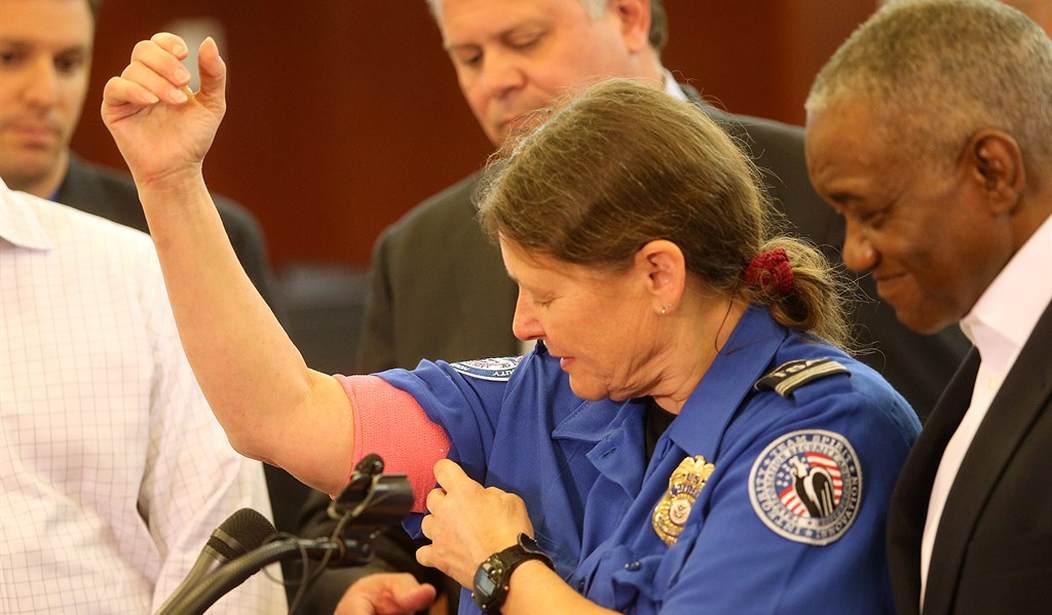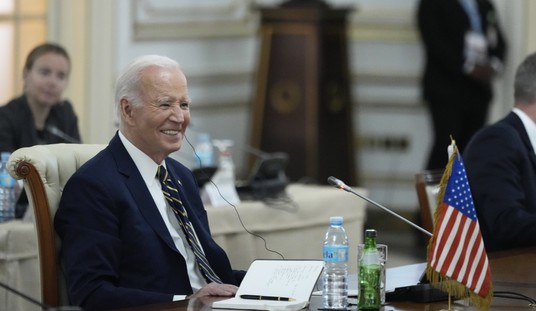The Transportation Security Administration (TSA) doesn’t secure much of anything; it is mere “security theater.”
Last week’s revelations that TSA screeners failed to find weapons and other deadly contraband in 96 percent of tests should be shocking. So-called “Red Teams” with the Department of Homeland Security secretly brought banned weapons, including mock bombs, through TSA checkpoints at dozens of airports across the country with the greatest of ease.
(On a side note, news reports have cited the 67 failures to detect weapons in 70 tests of the screeners to be a 95 percent failure rate. For the record, the precise percentage is 95.7, which rounds up to 96. Perhaps, we also suffer from an educational failure rate that’s a tad too high.)
Still, we’re shockingly not all that shocked by this whopping F-minus report card. We’ve seen this movie before. As David A. Graham writes in The Atlantic, “Reports about the TSA failing to find weapons and the like pop up every few years.”
During a 2007 test at Denver International Airport, the screening machinery’s alarm went off as a Red Team member sought to carry an IED through the checkpoint — by strapping it to her leg. While in this incident the technology worked, the manpower did not. The undercover agent told the TSA screener the bomb was a bandage from surgery and was allowed to proceed.
“If they miss something that’s obvious, often times that could happen, we will pull them off the line and retrain them,” explained then-TSA Security Director Earl Morris at the time. “That’s how we audit and keep track of which people are doing a better job than others and how we keep this whole process so that it really is one that’s legitimate and factual and actually is effective.”
Legitimate? Factual? Effective?
In 2013, after similar catastrophic collapses by TSA, then-Administrator John Pistole testified to an incredulous Congress that the reason these Red Teams had so much success in waltzing past our multi-billion-dollar security systems was that they knew the TSA protocols so well as to be “super-terrorists.”
Recommended
Problem is, the success rate of other strictly run-of-the-mill non-super-terrorists also appears to be sky-high.
In 2008, Jeffrey Goldberg wrote an article for The Atlantic detailing his many experiences carrying all sorts of contraband through TSA checkpoints:
Because I have a fair amount of experience reporting on terrorists, and because terrorist groups produce large quantities of branded knickknacks, I’ve amassed an inspiring collection of al-Qaeda T-shirts, Islamic Jihad flags, Hezbollah videotapes, and inflatable Yasir Arafat dolls (really). All these things I’ve carried with me through airports across the country. I’ve also carried, at various times: pocketknives, matches from hotels in Beirut and Peshawar, dust masks, lengths of rope, cigarette lighters, nail clippers . . . and, of course, box cutters. I was selected for secondary screening four times — out of dozens of passages through security checkpoints — during this extended experiment. At one screening, I was relieved of a pair of nail clippers; during another, a can of shaving cream.
No doubt, Democrats in Congress will hear this newest bombshell and immediately argue the TSA needs more money. We have heard that before, too.
After a 2009 review of TSA baggage screening found big problems, the agency plopped down $540 million on new screening equipment and $11 million to re-train personnel on that new equipment. Yet, according to a DHS inspector general, a recent series of surreptitious tests of the baggage screening system again found “vulnerabilities” and concluded that the TSA had not made any noticeable improvement.
How can a system, which so intrusively frisks and x-rays and gropes and torments the flying public, turn out to be of so little value?
“Like vaudeville theater,” writes David Graham, “the screening process seems to exist largely to create a spectacle.”
Yet, this isn’t vaudeville. The genre is “statism.”
Statism is the worship of government, or the reliance upon government to do many more than a few tasks. It is very old.
The ancient states arose from conquest, developing as a way to milk the masses for the benefit of the few. That’s what states traditionally do: use force to move wealth from one group to another.
Along the way, the states did do some good. Amidst all their horrors.
But mostly rulers just leveraged myth and bluster to cover their crimes.
In more recent times, in this great country (and earlier in England, and, inkling by inkling, in Europe’s smaller states), the idea arose that the state should be limited to a few necessary jobs, tightly controlled by the people so that government might actually defend rights, and not abridge them.
But this revolutionary democratic-republican ideology did not alter the basic nature of reality, turning the sow’s purse of the conquerors’ art into the gold of the Public Interest.
Without our vigilance, government always reverts back to its roots.
The TSA is simply the latest myth-and-bluster-backed scam aiding the ludicrous notion that government is all-powerful . . . while providing only faux security.
Get rid of it; let its people go.
Then watch airlines come up with more effective, less intrusive, more passenger-friendly security systems.
Want theater? Try “vigilance theater.”

























Join the conversation as a VIP Member